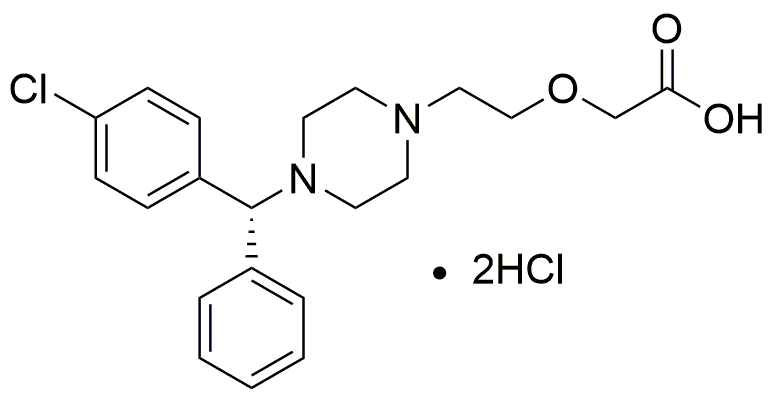Levocetirizine dihydrochloride is widely utilized in research focused on:
- Allergy Relief: Commonly used in the pharmaceutical industry, it effectively alleviates symptoms of allergic rhinitis and chronic urticaria, providing relief for patients suffering from seasonal allergies.
- Clinical Trials: Frequently involved in clinical studies to assess its efficacy and safety, helping researchers gather data on its effects compared to other antihistamines.
- Formulation Development: Utilized in the development of various dosage forms, such as tablets and syrups, allowing for flexible administration options tailored to patient needs.
- Pediatric Applications: Its favorable safety profile makes it suitable for use in children, addressing the specific challenges of treating allergic conditions in younger populations.
- Research on Antihistamine Mechanisms: Employed in academic research to explore the pharmacological mechanisms of antihistamines, contributing to the understanding of allergy treatments and potential new therapies.
General Information
Properties
Safety and Regulations
Applications
Levocetirizine dihydrochloride is widely utilized in research focused on:
- Allergy Relief: Commonly used in the pharmaceutical industry, it effectively alleviates symptoms of allergic rhinitis and chronic urticaria, providing relief for patients suffering from seasonal allergies.
- Clinical Trials: Frequently involved in clinical studies to assess its efficacy and safety, helping researchers gather data on its effects compared to other antihistamines.
- Formulation Development: Utilized in the development of various dosage forms, such as tablets and syrups, allowing for flexible administration options tailored to patient needs.
- Pediatric Applications: Its favorable safety profile makes it suitable for use in children, addressing the specific challenges of treating allergic conditions in younger populations.
- Research on Antihistamine Mechanisms: Employed in academic research to explore the pharmacological mechanisms of antihistamines, contributing to the understanding of allergy treatments and potential new therapies.
Documents
Safety Data Sheets (SDS)
The SDS provides comprehensive safety information on handling, storage, and disposal of the product.
Product Specification (PS)
The PS provides a comprehensive breakdown of the product’s properties, including chemical composition, physical state, purity, and storage requirements. It also details acceptable quality ranges and the product's intended applications.
Certificates of Analysis (COA)
Search for Certificates of Analysis (COA) by entering the products Lot Number. Lot and Batch Numbers can be found on a product’s label following the words ‘Lot’ or ‘Batch’.
*Catalog Number
*Lot Number
Certificates Of Origin (COO)
This COO confirms the country where the product was manufactured, and also details the materials and components used in it and whether it is derived from natural, synthetic, or other specific sources. This certificate may be required for customs, trade, and regulatory compliance.
*Catalog Number
*Lot Number
Safety Data Sheets (SDS)
The SDS provides comprehensive safety information on handling, storage, and disposal of the product.
DownloadProduct Specification (PS)
The PS provides a comprehensive breakdown of the product’s properties, including chemical composition, physical state, purity, and storage requirements. It also details acceptable quality ranges and the product's intended applications.
DownloadCertificates of Analysis (COA)
Search for Certificates of Analysis (COA) by entering the products Lot Number. Lot and Batch Numbers can be found on a product’s label following the words ‘Lot’ or ‘Batch’.
*Catalog Number
*Lot Number
Certificates Of Origin (COO)
This COO confirms the country where the product was manufactured, and also details the materials and components used in it and whether it is derived from natural, synthetic, or other specific sources. This certificate may be required for customs, trade, and regulatory compliance.


